What to do if you meet a bear: our expert safety guide
Knowing what to do if you meet a bear is vital knowledge when it comes to outdoor safety in many North American backcountry regions
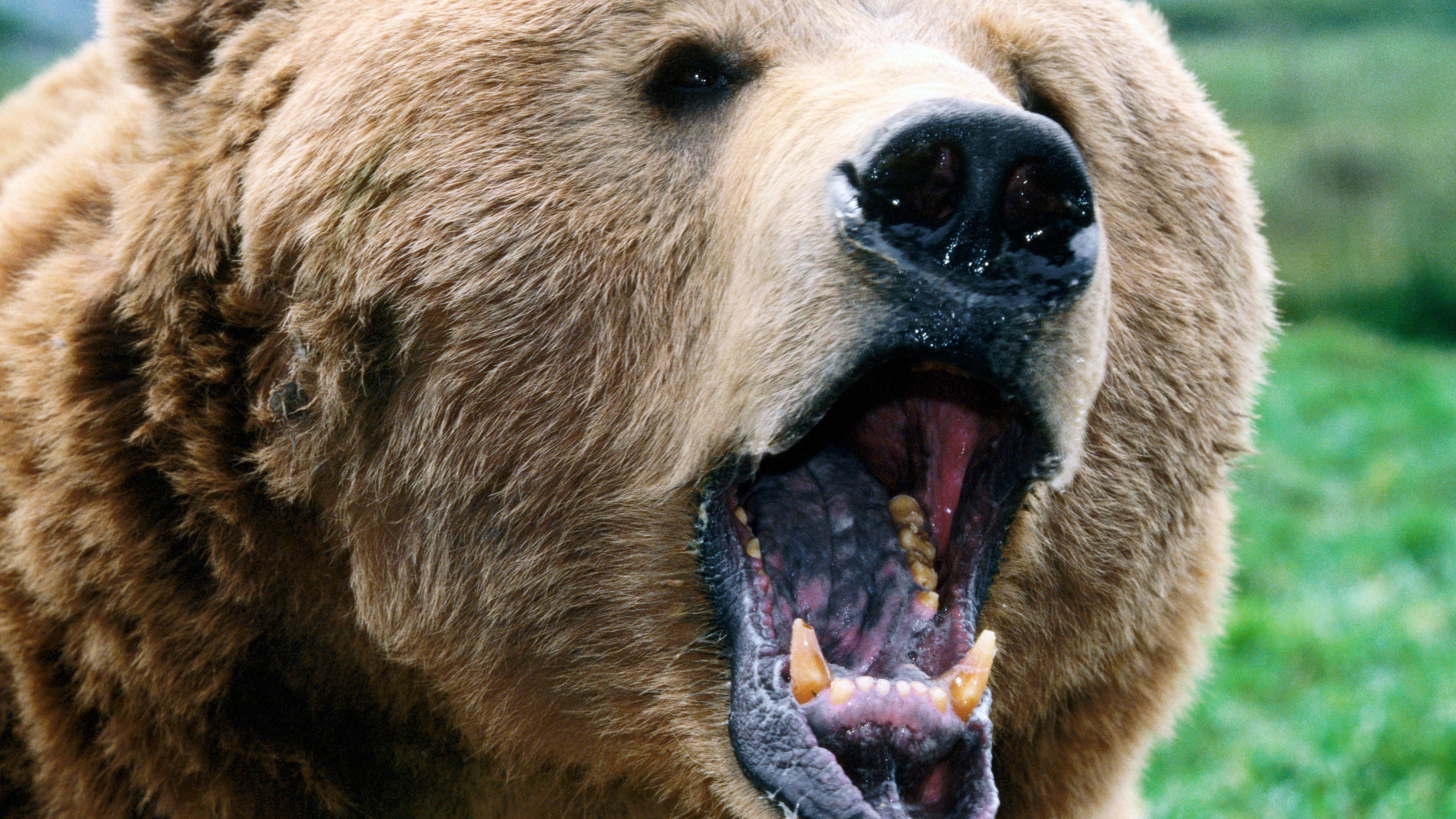
- What to do if you meet a bear
- Bears in North America
- Bear attacks
- How to avoid bears in the first place
- What to do if you meet a grizzly or brown bear
- 1. Don't run
- 2. Play dead
- 3. Spread your legs
- 4. Fight back if you have no choice
- What to do if you meet a black bear
- 1. Don't run
- 2. Make noise and make yourself big
- 3. Avoid eye contact
- 4. Secure children and pets
- 5. Back away slowly
- 6. Fight back
Knowing what to do if you meet a bear is a pre-requisite for hiking on North America's trails. With black bears found across the country and the more aggressive grizzly bears found in several states, it's important to know how to avoid an encounter in the first place and what to do should you end up face to face with one of these large predators.
We've asked our American backcountry expert to provide a simple guide on what to do if you meet a bear, inline with National Park Service advice. As there are different strategies for dealing with different bears, he details both what to do if approached by a grizzly or brown bear, as well as what to do if approached by a black bear.
By following his advice, you should be able to ensure that your bear encounter is something you'll want to regale your friends with, rather than a traumatic experience. Let's just hope you never need to go as far as fighting back.
What to do if you meet a bear
Avoiding bears as best you can in the first place should be your first priority. Prevention is better than cure. As each bear encounter is unique, there's no single strategy that will work every time.
If you are charged by a grizzly or brown bear, follow the steps below. For more detail, navigate further down the guide.
- 1) Don't try to run – a grizzly or brown bear can easily outrun you and it may trigger an aggressive response
- 2) Play dead – if you are approached by a grizzly or brown bear, lay flat on your stomach with your hands clasped around your neck
- 3) Spread your legs – this makes it more difficult for the bear to turn you over
- 4) Fight back – if the attack becomes overly aggressive and if you have no other choice, fight back, ideally with bear spray
If you meet a black bear, follow these 6 simple steps. For more detail on each, navigate further down the guide:
- 1) Don't run – a black bear can run faster than you and you might trigger its predatory instincts.
- 2) Make noise and make yourself big – if it's aware of you, make consistent noise and wave your arms over your head
- 3) Avoid eye contact – this may provoke a reaction
- 4) Secure children and pets – pick up any small children to stop them running
- 5) Back away slowly – move away from the area but keep your eyes towards the bear
- 6) Fight back – if unavoidable, fight back with your bear spray
Meet the expert

Colorado-based Brian is a passionate adventurer who loves all things hiking, camping, skiing, climbing and running in the backcountry. He shares his native state with between an estimated 8,000 to 12,000 black bears, so he knows exactly what to do if he encounters one.
Today's best deals
Bears in North America
- Black bears can be found in almost every US state
- Grizzly bears are limited to western Canada, Alaska, Idaho, Montana, Washington and Wyoming
- Grizzly bears are more likely to attack, though instances are still rare
Knowing what to do if you meet a bear is an important part of outdoor safety in many areas of North America, particularly those that we love to hike, bike, run and camp. Seeing a bear in the wild while you are hiking can be truly memorable, but what kind of experience you have depends on the situation, of course. And it depends on the type of bear.
All the latest inspiration, tips and guides to help you plan your next Advnture!
Black bears can be found in almost every US state, while the rather more frightening grizzly bear is limited to western Canada, Alaska, Idaho, Montana, Washington and Wyoming. Black bears are very unlikely to attack unless defending their cubs, while grizzlies are known to charge and attack humans.
Seeing a mother bear with her cubs from a distance can be the thrill of a lifetime and a quality pair of binoculars will allow you to see it up close. However, a bear encounter can also lead to a very dangerous situation, especially if you startle the animal, inadvertently intrude on its feeding grounds, or get too close to its offspring.
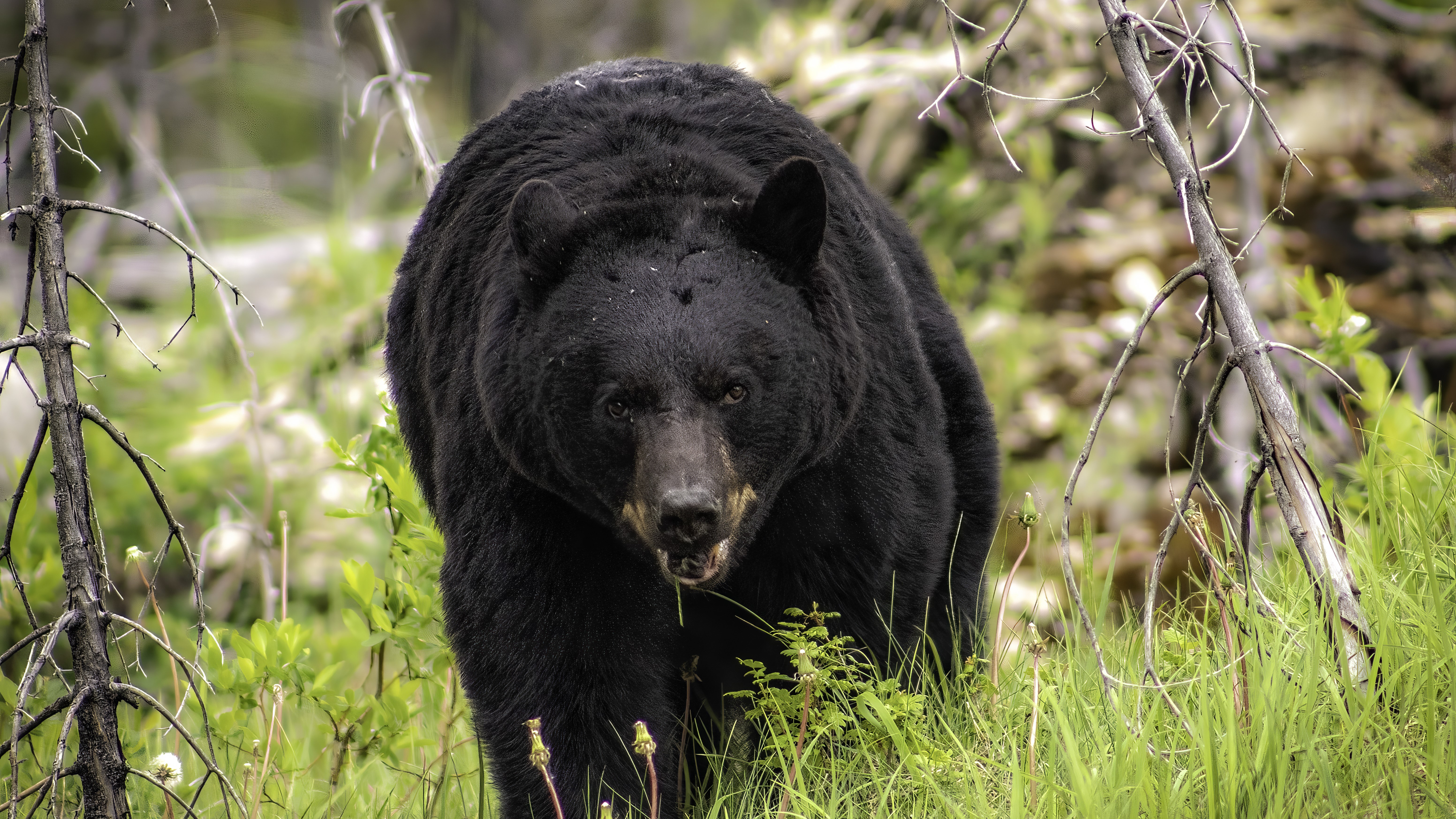
The good news is that – like most wild animals – bears tend to avoid people. Many hikers, trail runners, backpackers and campers have had a close encounter with a bear without ever knowing. And even most face-to-face meetings end with animal and human departing in opposite directions, without harm to either party. But, although your risk of being hurt if you meet a bear in the wild is statistically very low, they are large powerful animals, and can be unpredictable and dangerous.
Bear attacks
- Bear attacks are rare but when they do happen they can be fatal
- The best strategy with a grizzly bear is to play dead
- The best strategy with a black bear is to escape to a secure place
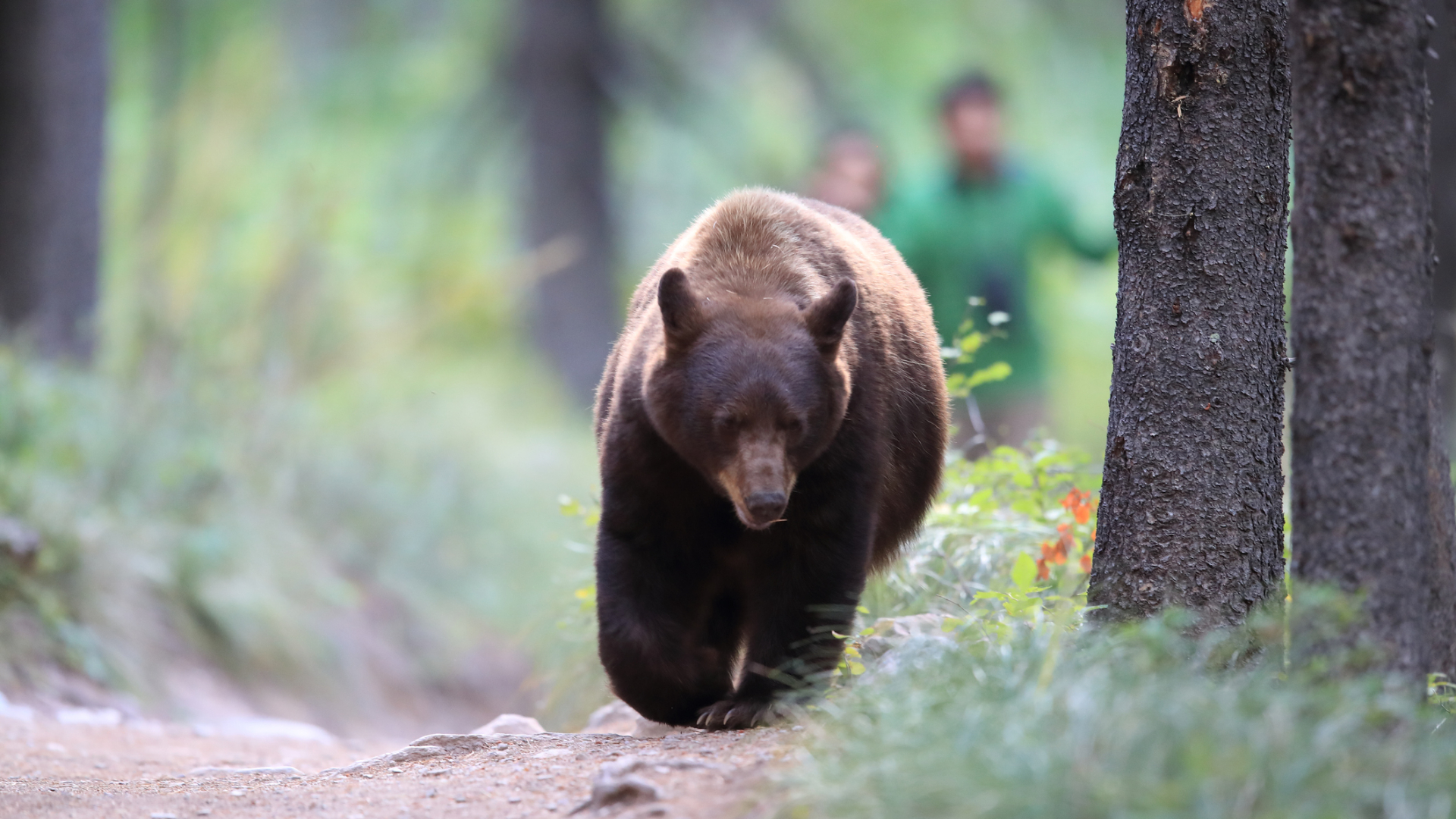
According to the National Park Service, most bears are only interested in protecting food, cubs, or their space. Bear attacks are rare, but they do happen and can lead to serious injuries or even death.
There were 664 bear attacks on people around the world between 2000–2015, about an average of 40 per year, according to Petpedia. There were 23 fatal black bear attacks in the US between 2000–2016 and there have been 180 fatal bear attacks in North America since 1784.
Each bear and each experience is unique; there is no single strategy that will work in all situations to guarantee safety. However, what type of bear you encounter can help you react properly in the event of an attack.
How to avoid bears in the first place
- The best way to avoid bears is to have a pre-planned hiking route on known trails
- Check with the local information centres about the latest bear safety info
- Avoid going off trails and NEVER approach a bear or try to feed one
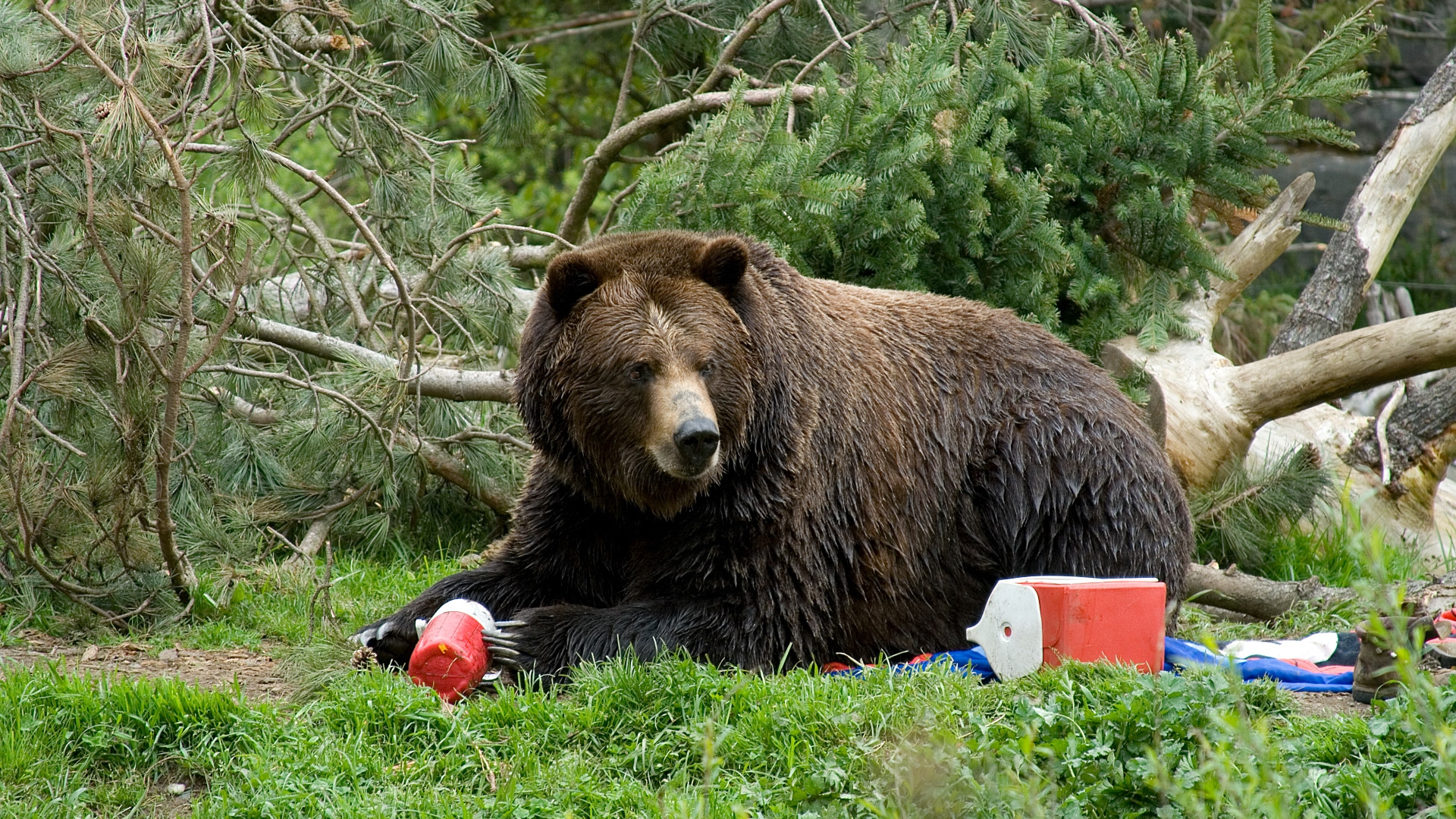
Ashli Nudd, a former National Park Service ranger who works as a professional hiking guide and backpacking trip planner, says the best way to avoid bear encounters is to have a pre-determined hiking plan plotted out on maps based on known trails and likely camping locations.
When you arrive in a National Park or State Park, always remember to check with the nearest visitor center or backcountry office for the latest bear safety information and advice on where to hike and camp. Avoid going off trails, never try to approach a bear to take a photograph, and never try to feed a bear, Nudd says.
What to do if you meet a grizzly or brown bear
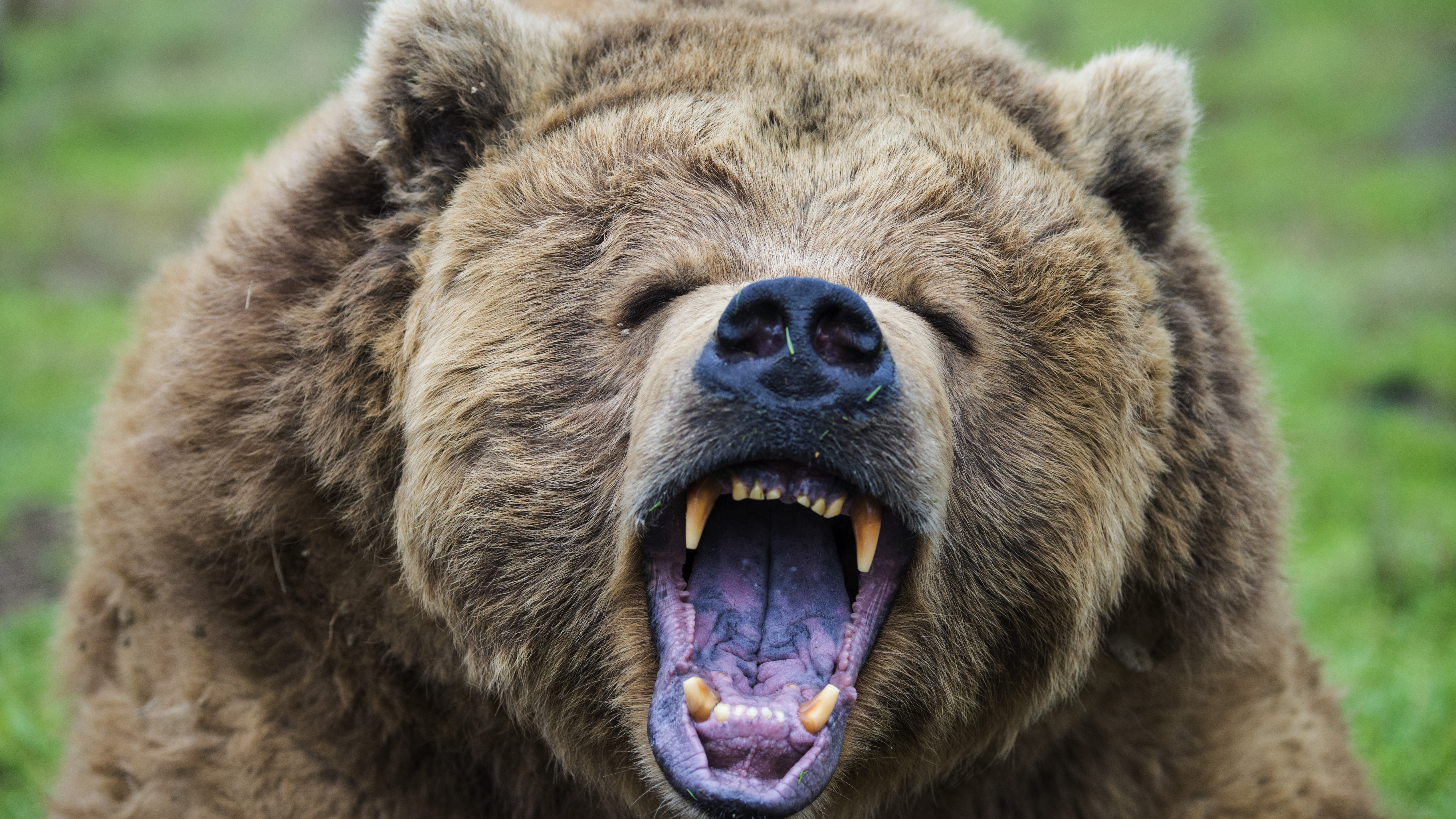
If you are charged or approached by a brown bear or grizzly bear, follow these steps:
Do not try to run
If you see a bear, no matter if the bear has seen you or not, the most essential thing to remember is to fight the urge to run away. Most species of bears can run 30mph and cover 100 meters in about seven seconds – much faster that the world’s top Olympic sprinters.
If you run, you might trigger the bear’s predatory instincts – especially if it’s young – inspiring it to chase you down just to thwart off a potential threat.
“Do not run!” Nudd emphasises. “Trust me, you cannot outrun a bear and you do not want the bear to consider you as prey.”
If the bear has not seen you, stay out of sight and try to stay downwind to avoid allowing the bear to smell your scent or any food you are carrying. Leave the area as soon as possible, even if that means altering your route.
Play dead
The best thing to do if approached or charged by a grizzly or brown bear is to leave your daypack on and play dead. As scary as that might sound, it’s a defensive manoeuver to help keep you as safe as possible. Simply lay flat on your stomach with your hands clasped behind your neck.
Spread your legs
Spread your legs to make it harder for the bear to turn you over. Remain as motionless as possible until the bear leaves the area. Fighting back usually increases the intensity of such attacks.
Fight back if you have no choice
However, if the attack persists, fight back vigorously with whatever you have at hand – a branch, rocks, one of your boots – to hit the bear in the face. If you've got bear spray, use it.
What to do if you meet a black bear

If you are attacked by a black bear, try to escape to a secure place such as a car or building but avoid playing dead. If escape is not possible, try to fight back using any object available. Concentrate your kicks and blows on the bear's face and muzzle. These 6-steps should help you negotiate the situation.
Do not run
Just as with grizzly and brown bears, don't run. Black bears can also outrun you and your dash may trigger a predatory instinct.
Make noise and make yourself big
If the bear is aware of you, talk to it in a calm, loud and consistent voice. While you’re doing this, slowly wave your arms over your head to make yourself look as large as possible without making any sudden movements. A bear is less likely to attack if it thinks you are a threat.
Avoid eye contact
Avoid direct eye contact with the bear, which may provoke it, but do watch it to see what it does next. The bear may run away immediately, or it may look at you and then resume doing whatever it was doing. Or it may approach you.
Secure children and pets
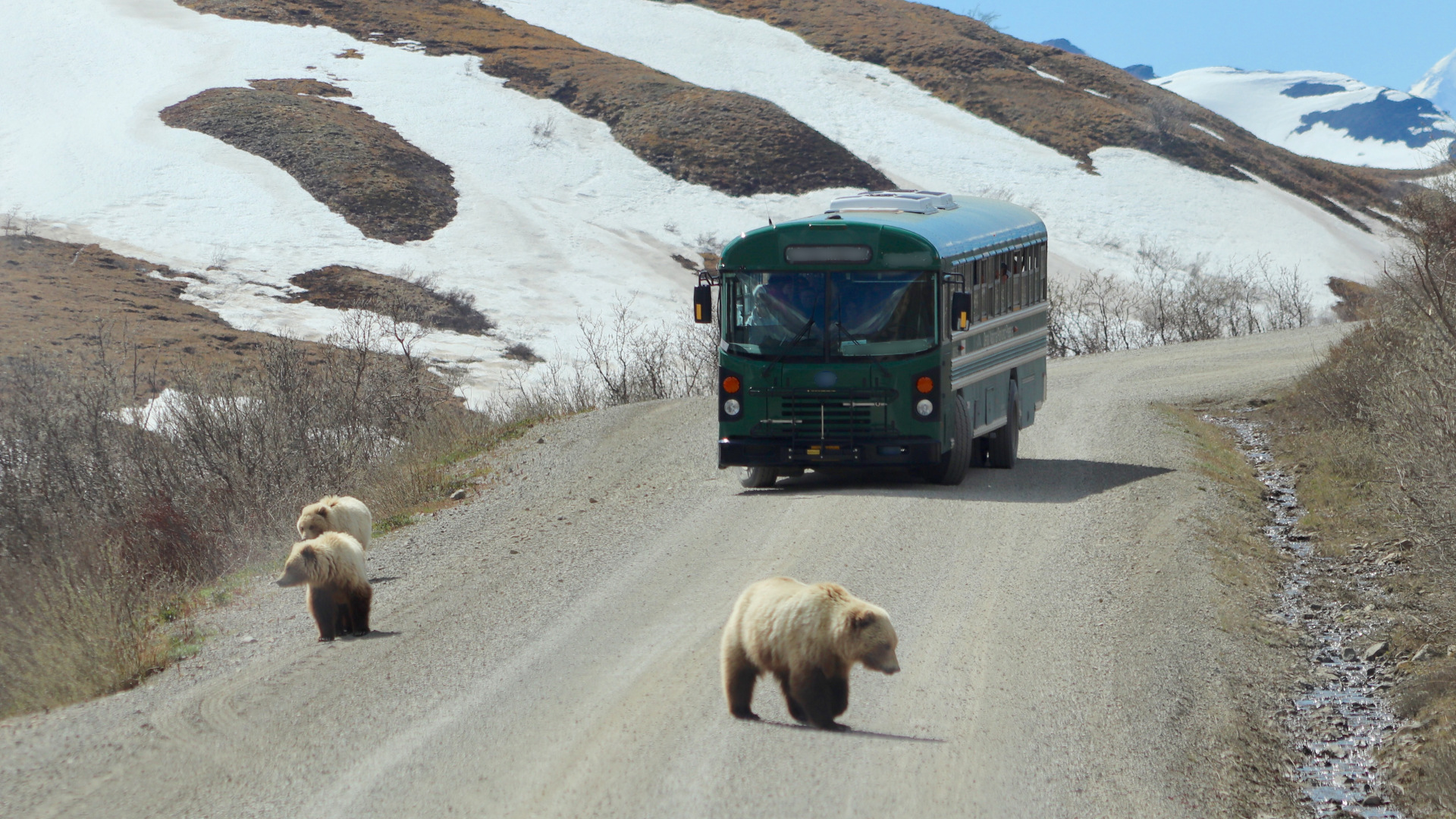
Pick up any small children so you can eliminate any chance of them running, shouting or crying out loud. Make sure all dogs are kept on a leash.
Back away slowly
Back away slowly, keeping your eyes focused on the bear, but try not to make direct eye contact with it. Do not turn your back on the bear – this is so you don’t lose sight of what it’s doing, but also to avoid triggering a chase reflex.
If the bear runs away, walk away in a different direction to the one the bear took. Leave the area to avoid another encounter.
If the bear approaches you, stop, stand your ground. Remain calm and observe the bear for clues to its mood or intentions.
Fight back
If any bear attacks you in your tent, or stalks you on a trail and then attacks, fight back! This kind of attack is very rare, but can be serious because it often means the bear is looking for food and sees you as prey. Read our article on how to use bear spray.

If you are hiking and encounter a bear, make sure to report it to a park ranger or other land agency official as soon as possible to help protect other hikers from bear encounters.
You will also want to read our article on how to use a bear canister to ensure you secure your food when camping and avoid unwanted guests in your campsite.
Brian is an award-winning journalist, photographer and podcaster who has written for Runner’s World, The Times, Outside, Men’s Journal, Trail Runner, Triathlete and Red Bulletin. He's also the author of several books, including Kicksology: The Hype, Science, Culture and Cool of Running Shoes. He lives in Boulder, Colorado, and loves to run, bike, hike, camp, ski and climb mountains. He has wear-tested more than 1,500 pairs of running shoes, completed four Ironman triathlons, as well as numerous marathons and ultra-distance running races.

